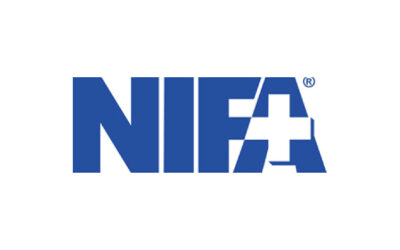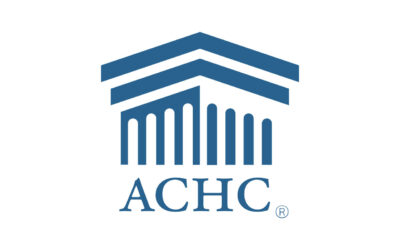By Sylvia Garcia-Houchins
When developing infection control processes, policies and procedures (PPP), health care organizations should use a structured approach to ensure they are meeting requirements.
Requirements vary based on applicable regulations, including from the Centers for Medicare and Medicaid Services (CMS), if deemed, manufacturer instructions for medical devices and supplies used by the organization, and accreditation requirements. Once organizations ensure they are meeting requirements, they may also consider incorporating recommendations from chosen evidence-based guidelines (EBGs), consensus documents, position statements and other sources of guidance on best practices. The goal is to create an infection prevention and control (IPC) program that adheres to local requirements and supplements those requirements with practices that can improve the safety and quality of the organization’s patient population, staff and visitors.
In order to meet this goal, infection preventionists (IPs) and others responsible for PPP should identify which EBGs and consensus documents are required versus those that are optional. The below Q&A can help prepare them to do so.
Which EBGs are required by The Joint Commission and/or CMS?
The Joint Commission requires compliance with:
- The Centers for Disease Control and Prevention (CDC) and/or World Health Organization (WHO) 1A, 1B and 1C hand hygiene guidelines (NPSG.07.01.01, EP1)
- Standard and transmission-based precautions (IC.02.01.01, EP 2 and 3)
Joint Commission standards and CMS requirements are not prescriptive regarding other EBGs or consensus documents that organizations must consider or implement. Joint Commission standards contain general wording that specifies an organization should “measure and monitor its infection prevention processes, outcomes and compliance using EBGs or best practices, and consider EBGs when implementing evidence-based practices.”
Are there other requirements for EBGs?
Joint Commission standards require compliance with state law and regulation and manufacturer instructions for use (IFUs) as part of a hierarchical method to address infection control (IC)-related requirements.1 Several states have adopted specific EBGs or consensus documents by incorporating them into health care code requirements. It is important for organizations to access their specific state requirements as they vary from state to state.
Additionally, manufacturer IFUs may refer users to EBGs and consensus documents for further information. Organizations need to confirm that manufacturer-required EBGs are used to clarify additional requirements but do not supersede an IFU. When an IFU is unclear or in conflict with an EBG (for example, the EBG states an instrument should be in a closed container for immediate use steam sterilization (IUSS), but the chosen EBG states all items undergoing IUSS should be placed in a closed container), the organization must resolve the conflict by contacting the device manufacturer’s technical services for clarification.
If an EBG is not required, how can IPs assess whether it should be incorporated into their IPC program?
IPs need to pay careful attention to sources and processes used to develop recommended IC practices. They should know the difference between an EBG, guidance, consensus document, position statement and policy, as well as the processes used to develop these documents.
Misinterpreting certain documents as requirements and adopting policies of other organizations with differing requirements, especially across state lines, may lead to significant misunderstandings regarding Joint Commission and CMS requirements – resulting in regulatory, financial and resource implications.
- EBG: Answers questions via a literature search protocol which identifies relevant articles. The evidence in the articles is abstracted and summarized before a group assesses and formulates recommendations based on consensus. EBGs should provide references that the user can use to evaluate relevance and context for their organization.
- Guidance: Provides instruction on how to address a situation and may include relevant literature. However, guidance documents may not consider unique aspects of an individual organization and must be carefully evaluated to determine risk and benefits.
- Consensus document: Created by a group and represents individuals’ collective opinions, which may or may not be supported by scientific literature. If a consensus group follows the American National Standards Institute (ANSI) and agrees to its oversight, procedures, approval process and more, the resulting consensus document becomes an American National Standard. Users may need to review literature to ensure recommendations are supported by evidence.
- Position statement: Includes viewpoints of a professional organization on a particular topic, as well as background and rationale to support that viewpoint. IPs may need to do their own literature review to determine if the viewpoint is sound or could be negated by additional information.
- Policy: Represents how an organization interprets and implements relevant requirements.
Which part of an EBG is required by The Joint Commission?
Unless required by Joint Commission standards, regulation, CMS or manufacturer IFUs, organizations may choose which segments of EBGs and consensus documents to incorporate into their practices. For example, AORN uses “should” to indicate a recommended action, “must” to designate requirements mandated by regulation, “may” to demonstrate action is permissible within the limits of the guidelines, and “can” to indicate possibility and capability.
If an EBG is not required, organizations may follow a specific AORN guideline and follow some or all of “should” recommendations based on applicability and impact to the organization, staff and patients.
IPs and other policy writers should clearly understand when, which and what part of EBGs are required before selecting a particular EBG or another document to incorporate into their IC policies, protocols or processes. They should add recommendations that are above the basic requirements only if they are based on compelling evidence for the improvement of safety or quality and are feasible and cost effective. Optional EBGs should not be incorporated if they conflict with routine organizational practices.
Staying engaged in your organization’s development of policy, protocols and processes including incorporation of required EBGs and active selection of optional EBGs and consensus documents, is critical to regulatory compliance and providing quality care that supports staff and patient safety.
– Sylvia Garcia-Houchins, MBA, RN, CIC, is the Director, Infection Prevention and Control, The Joint Commission.
1 The Joint Commission. Clarifying Infection Control Policy Requirements. Perspectives. April 2019.










